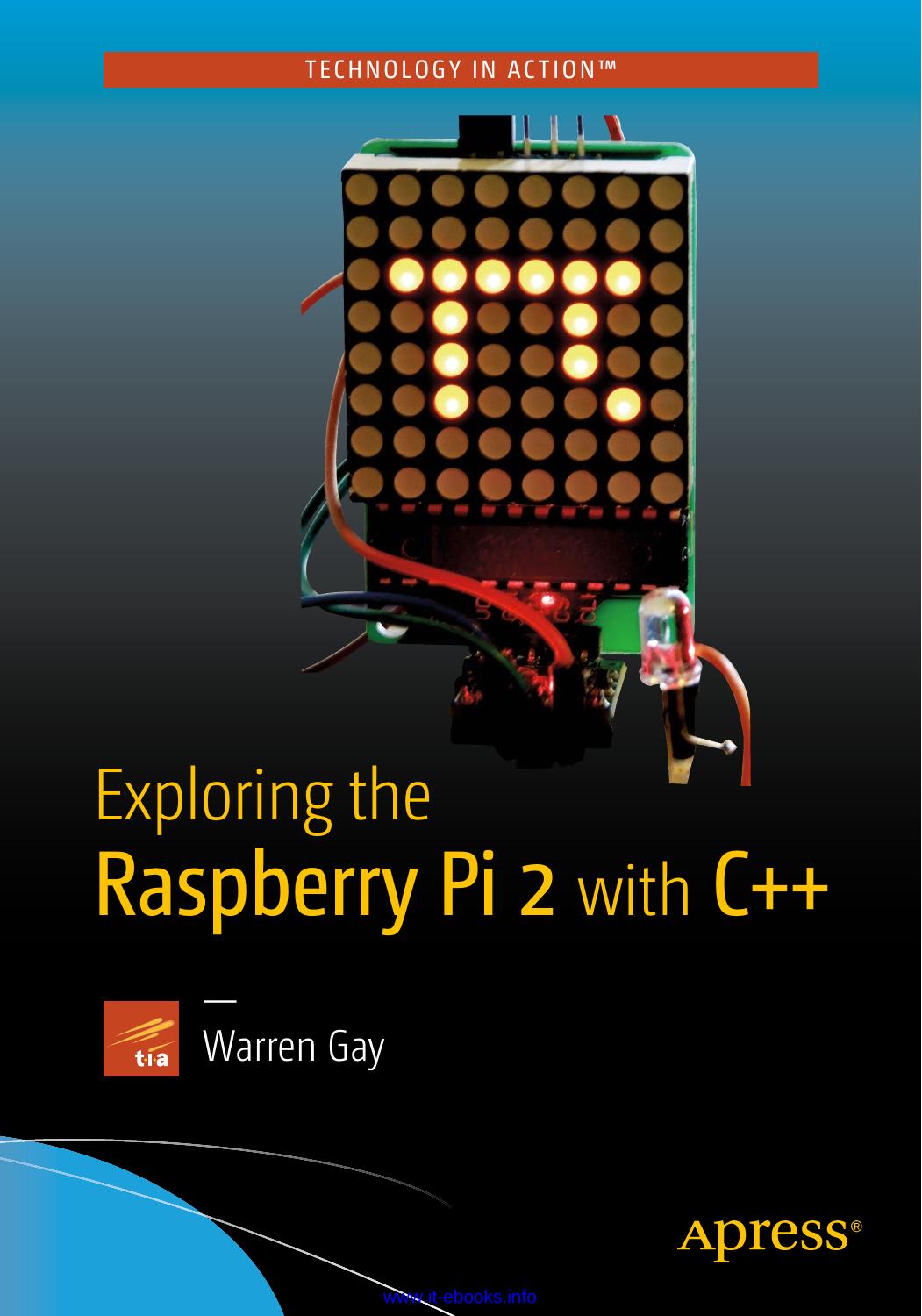Exploring the Raspberry Pi 2 with C++ by Warren Gay

Author:Warren Gay
Language: eng
Format: epub, pdf
Publisher: Apress, Berkeley, CA
If the input should go negative, however, the diode D1 begins to conduct and shunts current to ground (conduction would begin at about –0.6 V). Resistor R1 limits the current flow to avoid damaging the protection diode. This is the mechanism for discharging negative static charges. Likewise, if the voltage were to rise above +VDD, then current would begin to flow from the input through R1 into diode D2 to +VDD (D2 conduction begins at about +VDD + 0.6V). This time, R1 limits the current flow through D2. This simple mechanism keeps the MOSFET gate voltage within the range of Gnd (VSS) minus 0.6V to VDD plus 0.6V.
From a design standpoint, you should not count on R1 or the diodes for handling extreme signal swings. These are simply there to prevent static electric charges from damaging the device. If you have sloppy signal swings above or below the the gate limits, you should provide your own signal conditioning. The reason is simply that the the diodes or resistor might not handle the required current levels. For example, Broadcom does not provide current handling specifications of the GPIO protection diodes. They don’t want you to base your design on them.
Some of the CMOS 4000 series chips that you might use to interface with the Raspberry Pi use a zener diode in place of D1 or D2. This allows an extended input signal range. The CD4049 IC, for example, can be operated from a +3.3V supply and yet permit its input signal to be as high as +15V. This information is published in the component’s datasheet.
Download
Exploring the Raspberry Pi 2 with C++ by Warren Gay.pdf
This site does not store any files on its server. We only index and link to content provided by other sites. Please contact the content providers to delete copyright contents if any and email us, we'll remove relevant links or contents immediately.
| Coding Theory | Localization |
| Logic | Object-Oriented Design |
| Performance Optimization | Quality Control |
| Reengineering | Robohelp |
| Software Development | Software Reuse |
| Structured Design | Testing |
| Tools | UML |
The Mikado Method by Ola Ellnestam Daniel Brolund(20603)
Hello! Python by Anthony Briggs(19899)
Secrets of the JavaScript Ninja by John Resig Bear Bibeault(18208)
Dependency Injection in .NET by Mark Seemann(18108)
The Well-Grounded Java Developer by Benjamin J. Evans Martijn Verburg(17575)
OCA Java SE 8 Programmer I Certification Guide by Mala Gupta(17422)
Kotlin in Action by Dmitry Jemerov(17185)
Adobe Camera Raw For Digital Photographers Only by Rob Sheppard(16933)
Algorithms of the Intelligent Web by Haralambos Marmanis;Dmitry Babenko(16235)
Grails in Action by Glen Smith Peter Ledbrook(15390)
Test-Driven iOS Development with Swift 4 by Dominik Hauser(10393)
Becoming a Dynamics 365 Finance and Supply Chain Solution Architect by Brent Dawson(8056)
Microservices with Go by Alexander Shuiskov(7819)
Practical Design Patterns for Java Developers by Miroslav Wengner(7719)
Test Automation Engineering Handbook by Manikandan Sambamurthy(7672)
Angular Projects - Third Edition by Aristeidis Bampakos(7160)
The Art of Crafting User Stories by The Art of Crafting User Stories(6611)
NetSuite for Consultants - Second Edition by Peter Ries(6533)
Demystifying Cryptography with OpenSSL 3.0 by Alexei Khlebnikov(6305)
